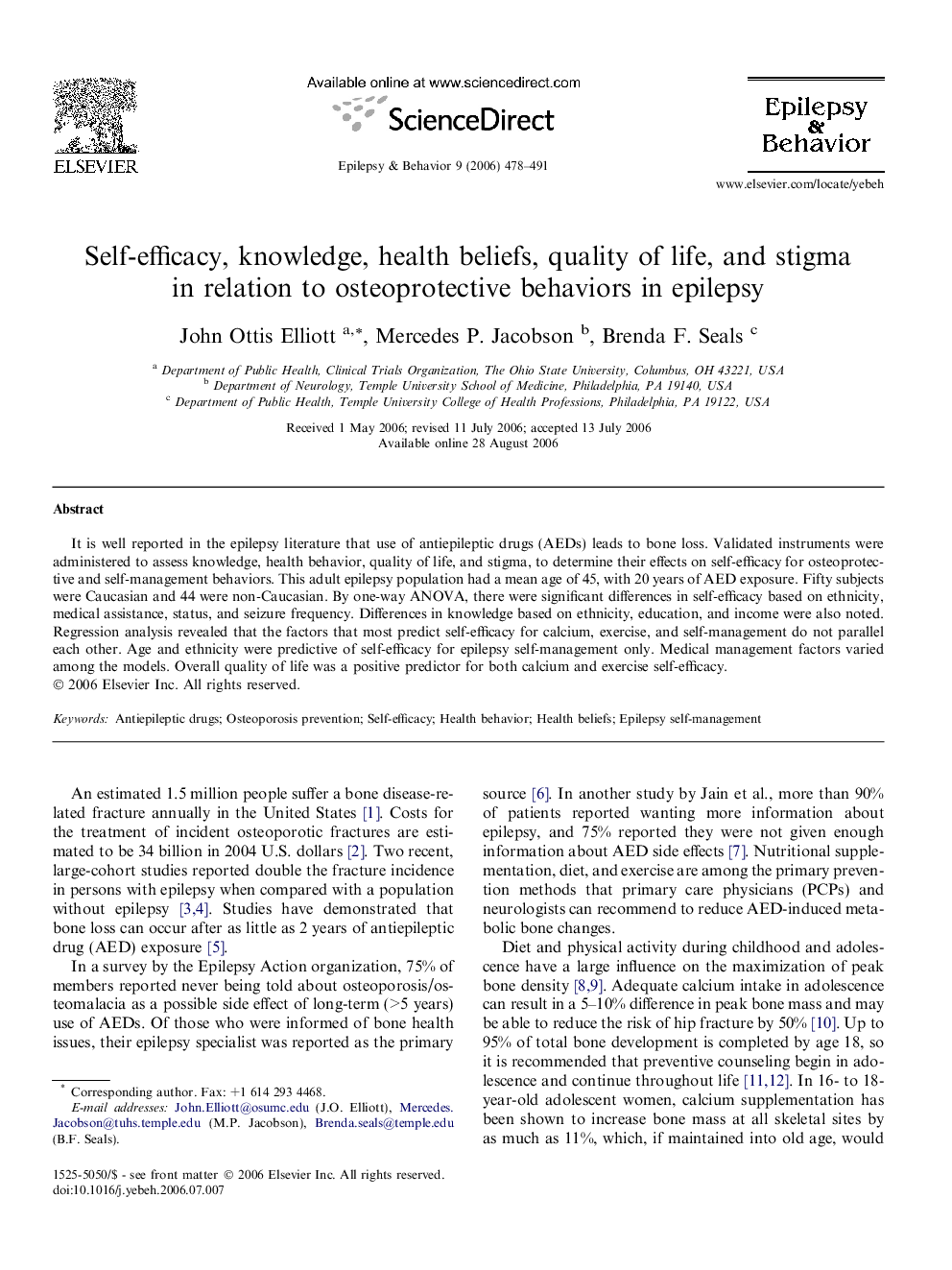| Article ID | Journal | Published Year | Pages | File Type |
|---|---|---|---|---|
| 3051625 | Epilepsy & Behavior | 2006 | 14 Pages |
It is well reported in the epilepsy literature that use of antiepileptic drugs (AEDs) leads to bone loss. Validated instruments were administered to assess knowledge, health behavior, quality of life, and stigma, to determine their effects on self-efficacy for osteoprotective and self-management behaviors. This adult epilepsy population had a mean age of 45, with 20 years of AED exposure. Fifty subjects were Caucasian and 44 were non-Caucasian. By one-way ANOVA, there were significant differences in self-efficacy based on ethnicity, medical assistance, status, and seizure frequency. Differences in knowledge based on ethnicity, education, and income were also noted. Regression analysis revealed that the factors that most predict self-efficacy for calcium, exercise, and self-management do not parallel each other. Age and ethnicity were predictive of self-efficacy for epilepsy self-management only. Medical management factors varied among the models. Overall quality of life was a positive predictor for both calcium and exercise self-efficacy.
